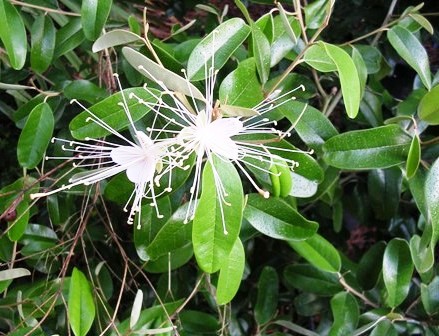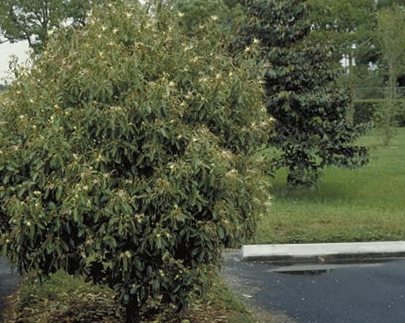Subscribe for all my updates and don't miss a thing! Sign me up!
The Beautiful & Unique
Jamaican Caper Plant
Sharing Is Caring! Share this awesome content with your friends now.
Jamaican Caper
by Rosemarie Gordon-Cole
‘Perfect’ is one of the words used to describe this unique plant. It is unique in that it has all the components needed to fertilize its own pollens!

New! Take a piece of Jamaica with you💃!
Savour the memories! Now you can get your authentic Jamaican souvenir items, as well as traditional Jamaican herbs, spices and housewares on our popular e-store. Click Here to learn more.
And, if you ever need a trustworthy and knowledgeable local guide, consider booking a private tour with us!
This is possible as the Jamaican Caper is one of the few plants with both male and female components.
And with a little help from the wind, insects, animals or even us humans the J'can Caper is able to do its thing ensuring that its species will always be around.
 |
A 3 – 10 inches brown pod appears after fertilization takes place and this is normally seen between July and September. When mature these pods are deep red and split open to show the seeds surrounded by a thick sticky substance which is a favorite with the birds.
Capparis Cynophallophora is the scientific name given to it. The origin of this tree like shrub is unknown but can be found in the following areas:
- South America
- Central America
- Parts of Mexico
- The Caribbean
This salt and drought tolerant plant is perfect for hedging. The mature plant is approximately 6 - 30 feet tall, very thick and has a pyramidal shape which makes it the perfect plant to use for blocking out that view you have been dying to hide. They can however be trimmed to stay at 4 to 5 feet tall.
Here are some additional characteristics of the JamaicanCaper:
- Multicolored leaves, green on top with a hairy brown beneath
- loves full sun or partial shade
- ideal for sandy or limestone soils
- Orchid-like flowers opens only in the evening and turns lavender when hit with the morning sun. Blooms last for only 24 hrs.
- Flowers give off a sweet fragrance in the evenings. Flowering normally happens between April and July.
If you are not able to get a seedling from under a parent tree you can try any of the two methods below.
Seeding
The ideal spot to start seedlings is a compost heap. The compost heap has the right temperature and moisture that make it the perfect environment for germination to take place. Within two to three weeks you should start seeing the emergence of saplings. Transplant when the plant is hardy enough to move.
Stem cuttings
If this is your choice of propagation it is best to cut from the base of the stems, which would leave you with buds and smaller stems. Even though this is a drought tolerant plant, in-order for the cutting to catch they will need to be watered at least once a day.

See Also: Jamaican Flowers
Return to Jamaican Flora & Fauna from Jamaican Caper.
Return to HomePage from Jamaica Caper.
Posted: 02/10/2012
Pages Related To Jamaican Caper
Make sure you subscribe to my free monthly e-zine My Island Jamaica Digest (MIJD) and stay with the latest from Jamaica!
New! Get My Latest Book👇🏿
|
You asked, I've answered! You no longer need to save for months or years, to enjoy paradise! I spilled the beans! sharing my top tips on finding cozy accommodations and secret gems, only the way a native could! Click Here to pick it up on my e-store and start saving now! |
See The Best Of Jamaica - In Videos!
|
My channel reaches over 140,000 subscribers worldwide and has leveraged over 11 million views, sharing, what I call 'The Real Jamaica'. Subscribe today and join our family of viewers. |
Read More ...
New! Experience The REAL Jamaica!
Book Your Private Tour here and experience Jamaica the way we (locals) do!
P.S. Didn't find what you were looking for?
Still need help?
Click Here to try our dependable and effective Site Search tool. It works!
Or, simply click here and here, to browse my library of over 500 questions and answers! Chances are someone already asked (and got an answer to) your question.







New! Comments
Have your say about what you just read! Leave me a comment in the box below.